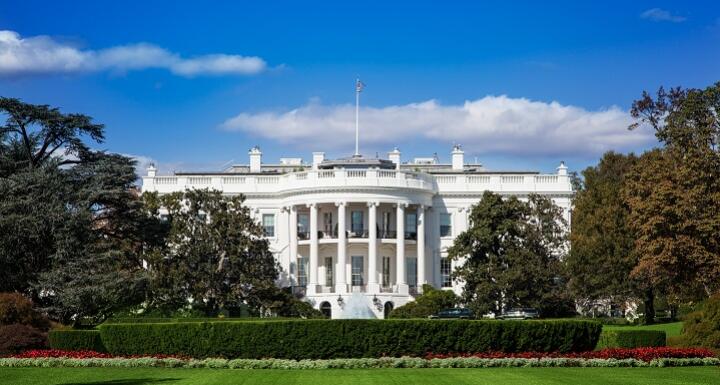On July 9, 2021, President Joseph R. Biden, Jr. signed an executive order "on promoting competition in the American economy" (the "Order"). The White House characterized the Order as an effort to reduce the trend of corporate consolidation, increase competition, and benefit consumers, workers, farmers, and small businesses.
The Order includes 72 initiatives by over a dozen federal agencies to address perceived competition problems across the American economy.
Two of these initiatives focus on the banking industry.
These two banking-related initiatives encourage (1) the Attorney General, in consultation with the primary federal banking agencies, to update existing guidelines on bank mergers to provide "more robust” scrutiny of mergers and (2) the Consumer Financial Protection Bureau (the "CFPB") to issue rules that will allow customers to more easily transfer their banking data from one institution to another.
A supporting statement issued by the White House notes that over the past two decades, there have been some 10,000 bank closures, and the United States has lost 70% of the banks it once had. The statement asserts that the closures disproportionately affected people of color, as a quarter of all rural closures have been in majority-minority areas of the country. The statement also noted that, while bank mergers are subject to federal review, the responsible federal agencies have not denied a bank merger application in 15 years.
Executive orders are issued by the President as a means of managing the operations of the executive branch of the federal government. They have the force of law, much like formal regulations issued by federal agencies, and are codified in the Code of Federal Regulations, but are not statutes.
Accordingly, executive orders require no approval from Congress, and Congress cannot simply overturn them. But they are subject to judicial review, and a sitting President may overturn an existing executive order by issuing another executive order to that effect. The bank-related provisions of the Order merely direct certain federal agencies to undertake new rulemaking initiatives, but contain no specific policy changes that have immediate effect.
However, perhaps to underscore the importance of these initiatives to the Biden Administration, the Order establishes a "White House Competition Council" to coordinate, promote and advance the federal government's efforts to address overconcentration, monopolization, and unfair competition affecting the American economy, including implementation of the administrative actions identified in the Order. The council will be led by senior economic advisors to the President and is populated by the Attorney General and other cabinet members who lead agencies with significant economic oversight responsibilities.
"Revitalization" of Bank Merger Oversight
The Order encourages the Attorney General, in consultation with the Board of Governors of the Federal Reserve System (the "Federal Reserve"), the Federal Deposit Insurance Corporation (the "FDIC"), and the Comptroller of the Currency (the "OCC"), to review current practices and adopt a plan by January 5, 2022, for the "revitalization of merger oversight" under the Bank Merger Act and the Bank Holding Company Act of 1956 "to ensure Americans have choices among financial institutions and to guard against excessive market power."
A brief review of the manner in which the federal government reviews bank mergers may help to put the Order in context.
The banking agencies and the Department of Justice (the "DOJ") review the competitive impact of proposed bank and bank holding company mergers under the banking and antitrust laws to proscribe mergers that would tend to substantially lessen competition. To speed up this competitive review and reduce regulatory burden on the banking industry, the banking agencies and the DOJ have developed quantitative screens to identify proposed mergers that clearly do not have significant adverse effects on competition.
In addition to these quantitative screens, the banking agencies and the DOJ have identified categories of qualitative information that have proven to be useful in analyzing the competitive effects of proposed mergers highlighted by the quantitative screens. These guidelines have remained largely unchanged since 1995.
The banking agency reviewing a proposed merger application depends upon the acquiring institution's form of organization. In general, an application for a proposed merger where the acquiring institution is a registered holding company, or a state-chartered bank that is a member of the Federal Reserve System, will be reviewed by the Federal Reserve. If the acquiring institution is a state-chartered bank that is not a member of the Federal Reserve System, the application will be reviewed by the FDIC. If the acquiring institution is a national bank, it will be reviewed by the OCC. However, the banking agencies have historically cooperated fully on merger transactions that present overlapping jurisdiction, and the Order specifically directs all federal agencies to cooperate fully in situations where they have overlapping jurisdiction with respect to the administration's initiatives to increase competition.
The screens developed by the DOJ and the federal banking agencies to perform a competitive review of proposed bank mergers are based on the Herfindahl–Hirschman Index, or "HHI," a commonly accepted measure of market concentration. The HHI is calculated by squaring the market share of each firm competing in a defined market and then summing the resulting numbers. For example, for a market consisting of four firms with shares of 30, 30, 20, and 20 percent, the HHI is 2,600 (302 + 302 + 202 + 202 = 2,600).
The banking agencies rely primarily on "Screen A," which looks at competition in predefined markets developed by the Federal Reserve. Under current guidelines, if the calculation specified in Screen A does not result in a post-merger HHI over 1800 and an increase of more than 200, the banking agencies are unlikely to conduct further review of the competitive effects of the merger. If the result of the calculation specified in Screen A exceeds the 1800/200 threshold, the agencies will scrutinize the transaction more closely, and applicants may submit calculations under Screen B (which is focused on competitive data regarding commercial loans).
In instances where Screen A and/or Screen B highlight a transaction for further review, the applicant may present additional information not considered in the screens to establish a clearer picture of competitive realities in the market. Such information may include evidence that:
- the merging parties do not significantly compete with one another;
- rapid economic change has resulted in an outdated geographic market definition;
- market shares are not an adequate indicator of the extent of competition in the market;
- a particular institution's market share overstates or understates its competitive significance;
- there are recent or rapidly growing entrants into a particular market;
- there are likely future entrants into the market;
- a thrift institution or credit union is actively engaged in providing services to commercial customers; and
- competition exists from out-of-market institutions for commercial customers.
Parties planning a merger transaction are encouraged by the guidelines to consult with the relevant banking agency or the DOJ before submitting a merger application. Where a proposed merger causes a significant anti-competitive problem, it is often possible to resolve the problem by agreeing to make divestitures that mitigate the loss of competition in the market.
Although not mentioned in the supporting statement, the Order follows an announcement by the DOJ during the previous administration seeking public comments on whether it should revise the 1995 bank merger competitive review guidelines "to reflect emerging trends in the banking and financial services sector and modernize its approach to bank merger review under the antitrust laws." The issues identified in this request for comments may offer some insight as to the topics that will be reviewed by the agencies under the Order, although the ultimate conclusions may differ considerably given the change in administrations. Those topics included:
- to what extent, if at all, is it useful to have banking-specific merger review guidance;
- to what extent, if any, does the industry need greater clarity on how the DOJ applies its general merger guidelines in investigations of bank mergers;
- to what extent would it be helpful to have joint guidance from the DOJ and the federal banking agencies on bank merger reviews;
- should the specific screening thresholds in the 1995 banking guidelines be updated;
- should product markets included in the DOJ analysis be expanded beyond: (1) retail banking products and services, (2) small business banking products and services, and (3) middle market banking products and services;
- should the geographic markets defined by the Federal Reserve under the current banking guidelines be altered;
- should the geographic markets for consumer and small business products and services still be considered "local;"
- should the DOJ apply different screening criteria and HHI thresholds for urban versus rural markets;
- should the DOJ continue to consider farm credit lending as a mitigating factor;
- does the DOJ give appropriate weight to online deposits and competition from non-traditional banks, thrift institutions, and credit unions;
- how should the DOJ's guidelines take into account the lack of publicly available data on the geographic dispersion of deposits from online banks; and
- should the DOJ implement a de minimis exception for its review of very small transactions beyond providing a report on competitive conditions to the relevant banking agency?
Portability of Consumer Banking Data
The Order encourages the CFPB, consistent with the pro-competition objectives stated in section 1021 of the Dodd-Frank Act, to consider:
- commencing or continuing a rulemaking to facilitate the portability of consumer financial transaction data so consumers can more easily switch financial institutions and use new, innovative financial products; and
- enforcing the existing prohibition on unfair, deceptive, or abusive acts or practices in consumer financial products or services pursuant to section 1031 of the Dodd-Frank Act so as to ensure that actors engaged in unlawful activities do not distort the proper functioning of the competitive process or obtain an unfair advantage over competitors who follow the law.
Unlike the Order's provisions relating to agency review of bank mergers, there is no hard deadline imposed on the CFPB for the adoption of a plan to implement the Order's objectives with respect to the portability of consumer banking data and related enforcement priorities.
Conclusion
While the bank-related portions of President Biden's July 9th order merely direct the DOJ, the primary federal banking agencies, and the CFPB to consider policy and regulatory changes affecting federal review of bank mergers and the portability of consumer banking data, it is reasonable to expect proposals for significant changes that reflect the current administration's stated public policy objectives under the general umbrella of "promoting competition."
Banks should monitor the rulemaking initiatives of their primary federal regulator and the CFPB undertaken in response to the Order, and consider commenting directly or through federal and state trade associations on any formal proposals. Of particular concern will be the extent to which any revised guidelines take into account competition from emerging nonbank or "fintech" market entrants, competition from thrifts and credit unions that are fully engaged in commercial lending activities historically within the sole purview of traditional banks, and practical and logistical matters associated with increasing the portability of consumer banking data.








